2023 in Review
No replays 😊
In order finished
In order finished
193 Games
Difficult to put into words how this makes me feel, but it seems a fitting capstone for a year marked by LLMs, themselves harvesters of every shred of available data gathered by algorithms we've been forced to abide by following the hyper-digitisation of life in the wake of COVID.
I shoulda never smoke that shit now I'm at a surface of revolution generated by revolving a circle in three-dimensional space about an axis that is coplanar with the circle.
I hesitate to call this is a game in the truest sense since it feels more like a logic puzzle for six year olds.
A very rough introduction to Klonoa.
As an early WonderSwan title, and Namco's first game on the system, I admittedly didn't expect too much. The core platforming is passable, and the alteration of Klonoa's gameplay to fit a smaller-scale, action puzzle romp works surprisingly well (though I have no knowledge of what changes were actually made to that end). Getting the moonshards to finish each level is straight forward, with increasingly difficult puzzles required to get all the dream shards in a level for 100%.
There is an apparent attempt at replicating the graphical fidelity of the first PlayStation title, with the level/graphic designers assuring fans they worked hard to that end. Despite those efforts, the backgrounds blur together in such a way that, during actual play, the parallax effects are not noticed or registered even subconsciously. Foreground elements are detailed and make good use of the eight tones of grey, but their size on an already minuscule screen leads to a great deal of remembering level layouts, particularly when juggling crates across an entire section. One of the developers allegedly proposed shrinking Klonoa's (and presumably all other) sprites to accommodate the fact some levels were made for TATE play. Those TATE levels are an interesting feature in theory, but those stages rarely take advantage of that focus on verticality. If anything, they are more frustrating due to limited horizontal screen real estate mixed with lateral challenges.
The misunderstanding of the hardware continues with the sound. Afforded only four audio channels and a dreadfully tinny speaker, Hiromi Shibano and Junko Ozawa wanted to ensure Klonoa's iconic "Wahoo!" would be reproduced. It is a valiant effort on Ozawa's part in particular, with the digitised speech coming through fairly clearly, but the constant yelping detracts from the already stifled music and sound design as every possibly resource is thrown at Klonoa's voice. On top of that, what music can be heard is innocuous at first, but agonising when heard non-stop for all six stages of a world. And that is in an ideal scenario, wherein the player has access to the WonderSwan's headphone adapter accessory. The puny speaker has the potential to output genuinely good sound, but everything clashes harshly in Moonlight Museum.
From what I've read, the Game Boy Advance entries are a marked improvement. With a greater understanding of the WonderSwan's peculiarities following Namco's other releases on the platform (as well as the later addition of colour) there was considerable potential for Klonoa to be great on WonderSwan. However, he was given no second chance here, effectively using the WonderSwan as he would an enemy, discarding it to reach a higher level.
As an early WonderSwan title, and Namco's first game on the system, I admittedly didn't expect too much. The core platforming is passable, and the alteration of Klonoa's gameplay to fit a smaller-scale, action puzzle romp works surprisingly well (though I have no knowledge of what changes were actually made to that end). Getting the moonshards to finish each level is straight forward, with increasingly difficult puzzles required to get all the dream shards in a level for 100%.
There is an apparent attempt at replicating the graphical fidelity of the first PlayStation title, with the level/graphic designers assuring fans they worked hard to that end. Despite those efforts, the backgrounds blur together in such a way that, during actual play, the parallax effects are not noticed or registered even subconsciously. Foreground elements are detailed and make good use of the eight tones of grey, but their size on an already minuscule screen leads to a great deal of remembering level layouts, particularly when juggling crates across an entire section. One of the developers allegedly proposed shrinking Klonoa's (and presumably all other) sprites to accommodate the fact some levels were made for TATE play. Those TATE levels are an interesting feature in theory, but those stages rarely take advantage of that focus on verticality. If anything, they are more frustrating due to limited horizontal screen real estate mixed with lateral challenges.
The misunderstanding of the hardware continues with the sound. Afforded only four audio channels and a dreadfully tinny speaker, Hiromi Shibano and Junko Ozawa wanted to ensure Klonoa's iconic "Wahoo!" would be reproduced. It is a valiant effort on Ozawa's part in particular, with the digitised speech coming through fairly clearly, but the constant yelping detracts from the already stifled music and sound design as every possibly resource is thrown at Klonoa's voice. On top of that, what music can be heard is innocuous at first, but agonising when heard non-stop for all six stages of a world. And that is in an ideal scenario, wherein the player has access to the WonderSwan's headphone adapter accessory. The puny speaker has the potential to output genuinely good sound, but everything clashes harshly in Moonlight Museum.
From what I've read, the Game Boy Advance entries are a marked improvement. With a greater understanding of the WonderSwan's peculiarities following Namco's other releases on the platform (as well as the later addition of colour) there was considerable potential for Klonoa to be great on WonderSwan. However, he was given no second chance here, effectively using the WonderSwan as he would an enemy, discarding it to reach a higher level.
I've loved Wilmot's Warehouse mostly from afar since it's release, occasionally picking it up for an hour until reaching around 100 items, getting overwhelmed, and shelving it again. Over the past few weeks, however, and after five years of my living space becoming increasingly chaotic (particularly throughout the pandemic), renovations have been underway and are almost complete. With more clothes than dresser space, more books than bookshelves would allow, and a collection of tchotchkes, bulky controllers, and piles on top of piles of things that my cat kept knocking over, reorganisation was crucial just as more storage was. Within that context of shuffling everything around, not simply moving it out and plopping it back in, Wilmot's Warehouse finally made sense.
The shuffle of the warehouse is ongoing as mental categories ebb and flow across artificial boundaries. A bottle of liquid goes from my medicine area to the science area to the food area to the liquids area back to the medicine area. A tent goes with outdoor paraphernalia on the side for temporary shelter (opposite my weather conditions), itself abutted against permanent structures, construction goods, and patterns. An influx of tree stumps upsets the spacing of all my botanical wares, so much so that I move them with other measurement iconography (tree rings show time, are they not the calendars of nature?).
Like the pillars cleared with my performance stars, those new vast storage spaces let me categorise my own collection. Books with books, sure, but with academic texts in a place of their own, art books elsewhere, historical tomes too receive a space, writing on games adjacent to other books but also physical games. Those, of course, are near my music CDs. My archival cases of X68000 print media and diskettes stay with texts on games because they too are referential works.
It sounds innocuous and almost childlike to describe this in such a way, but these spatial allocations are the product of manoeuvring things around other things for a fortnight. It approaches a completeness, but the few remaining things threaten to displace other things meaning a potential collapse of this established order of things. If necessary, I'll dedicate a weekend to my own stock take, laboriously but methodically getting everything back into its place. For now.
Every collection of things is ultimately a self-serving system of chaos teetering on the brink. Archives, libraries, stores, warehouses, attics, bookshelves, museums, landfills, mechanics, grocers, blogs, directories, transit systems. With my post-graduate studies in library and information science beginning in the autumn, I too will be a cog in the machine of sorting one of humanity's warehouses. Like Wilmot, I hope to have a smile on my face all the while. :^)
The shuffle of the warehouse is ongoing as mental categories ebb and flow across artificial boundaries. A bottle of liquid goes from my medicine area to the science area to the food area to the liquids area back to the medicine area. A tent goes with outdoor paraphernalia on the side for temporary shelter (opposite my weather conditions), itself abutted against permanent structures, construction goods, and patterns. An influx of tree stumps upsets the spacing of all my botanical wares, so much so that I move them with other measurement iconography (tree rings show time, are they not the calendars of nature?).
Like the pillars cleared with my performance stars, those new vast storage spaces let me categorise my own collection. Books with books, sure, but with academic texts in a place of their own, art books elsewhere, historical tomes too receive a space, writing on games adjacent to other books but also physical games. Those, of course, are near my music CDs. My archival cases of X68000 print media and diskettes stay with texts on games because they too are referential works.
It sounds innocuous and almost childlike to describe this in such a way, but these spatial allocations are the product of manoeuvring things around other things for a fortnight. It approaches a completeness, but the few remaining things threaten to displace other things meaning a potential collapse of this established order of things. If necessary, I'll dedicate a weekend to my own stock take, laboriously but methodically getting everything back into its place. For now.
Every collection of things is ultimately a self-serving system of chaos teetering on the brink. Archives, libraries, stores, warehouses, attics, bookshelves, museums, landfills, mechanics, grocers, blogs, directories, transit systems. With my post-graduate studies in library and information science beginning in the autumn, I too will be a cog in the machine of sorting one of humanity's warehouses. Like Wilmot, I hope to have a smile on my face all the while. :^)
A toothless introduction to the Playdate.
I think I'm having a heart attack.
Bearing witness to three Americans and a Brazilian all claiming they know more about the UK than the others.
It's REALLY no Son Son.
A mistake.
The actual driving model is ghastly when cornering but the announcer sounds like Coach Z so all is forgiven.
Words cannot express how badly I wish I had seen one boob. I didn't even realise you could do a version of Qix without a boob in it.
Operates wonderfully as the first Tetris Guideline title released in Japan. The Wonderswan's accommodation of a portrait layout means a greater play area relative to the screen, and thus a greater focus on the game itself. Compared to its contemporary, the GBA release of Tetris Worlds, it is leagues better in nearly every way. The particulars of the X and Y button pads makes every move feel deliberate when compared to the relatively inaccurate GBA D-pad. Even on Level 15, I felt in control of the field in a manner that felt incongruous with my expectations of the early 2000's handheld Tetris experience. Furthermore, Tetris on Wonderswan makes each square visibly distinct, as opposed to the featureless pieces of Tetris Worlds on GBA. That implementation of a functionally identical game come across as cheap and tawdry in nearly every way. The hold and next pieces therein seem an afterthought, here they are apparent and intentional. Even the soundtrack, bound to such an inferior chip on Wonderswan, is leagues better than the quiet frumpy GBA's meagre output.
Tetris on Wonderswan is exactly what I look for in a handheld Tetris experience, and it is a shame it never reached our shores.
Oh this art's kinda cute I hope this isn't actually a foot fetish game. <- Clueless
Cinematic puzzlery before we were ready. Suzuki Bakuhatsu astounds with its production values, abound with turn of the millennium photography, set dressing, apparel, and unbridled contentment. For as harrowing as the premise is, that the mundane has been overtaken by sophisticated explosives, the often devil-may-care attitude of Rin Ozawa's character suggests a subconscious understanding that this danger could never really happen. This is a world before the War on Terror, before we were made to feel unsafe by government and terrorists alike. Why not watch a bomb defusal expert hurriedly carry out her craft on stage, how could the worst possibly come to pass?
These vague plot points and extensive production are indicative of Sol and Enix's attempt to break the conventions of the stagnant puzzle genre. Tetris and Panel de Pon with new coats of paint were not enough. Kula World and iQ weren't thinking big enough. If the medium was to mature into a legitimate mode of storytelling (or at least entertainment) it needed bombast across all genres. The puzzle game could (and is shown to be) so much more than the puzzles themselves. It can be as tense as a thriller, as lighthearted as a situation comedy. Yet the puzzles too remain a highlight, with fully realised, complexly nesting polygonal designs which are explored in the round in a step above Resident Evil or Skyrim. The bombs are as the puzzle boxes seen in Fireproof Games' The Room, a series of self-affecting pieces, more involved than they let on. Suzuki Bakuhatsu simply would not work in a two-dimensional space.
Tomoyuki Tanaka's shibuya-kei interstitial compositions are as much a highlight as Rin Ozawa's humming during defusal, and the cast and crew are dripping with talent. On the variety show Suzuki inexplicably becomes a part of, we see Yukiko Ehara and YOU THE ROCK★ flanking Minami Shirakawa. Asami Imajuku, Haruichiban, and Kiyohiko Shibukawa make surprise appearances as well. Though not quite a who's-who of the Japanese entertainment industry, these familiar faces (especially two decades after release) demonstrate that Suzuki Bakuhatsu was all about bombast. In a world before Portal and Catherine, however, perhaps we were unprepared to accept that puzzle games could be something more.
These vague plot points and extensive production are indicative of Sol and Enix's attempt to break the conventions of the stagnant puzzle genre. Tetris and Panel de Pon with new coats of paint were not enough. Kula World and iQ weren't thinking big enough. If the medium was to mature into a legitimate mode of storytelling (or at least entertainment) it needed bombast across all genres. The puzzle game could (and is shown to be) so much more than the puzzles themselves. It can be as tense as a thriller, as lighthearted as a situation comedy. Yet the puzzles too remain a highlight, with fully realised, complexly nesting polygonal designs which are explored in the round in a step above Resident Evil or Skyrim. The bombs are as the puzzle boxes seen in Fireproof Games' The Room, a series of self-affecting pieces, more involved than they let on. Suzuki Bakuhatsu simply would not work in a two-dimensional space.
Tomoyuki Tanaka's shibuya-kei interstitial compositions are as much a highlight as Rin Ozawa's humming during defusal, and the cast and crew are dripping with talent. On the variety show Suzuki inexplicably becomes a part of, we see Yukiko Ehara and YOU THE ROCK★ flanking Minami Shirakawa. Asami Imajuku, Haruichiban, and Kiyohiko Shibukawa make surprise appearances as well. Though not quite a who's-who of the Japanese entertainment industry, these familiar faces (especially two decades after release) demonstrate that Suzuki Bakuhatsu was all about bombast. In a world before Portal and Catherine, however, perhaps we were unprepared to accept that puzzle games could be something more.
🎵Adventures of Lolo 1 and 2🎵
🎵King's Knight, Dig Dug🎵
🎵Chew-Man-Fu🎵
🎵King's Knight, Dig Dug🎵
🎵Chew-Man-Fu🎵
Get this man some help, he's been swinging a bat at the air for hours now. I don't think the ball thrower is even plugged in.
The optimism of the mid-2000s distilled through a Sony VAIO. Boundless, if a little self-limited and repetitious. Drives like a dream though.
A mistake.
An unassuming bridge between past and future.
Paper is with us always, from birth to death.
The 3DO’s multimedia library is a largely bifurcated collective of (early) childhood edutainment software and adult only erotica. It is an often shocking contrast, the likes of Putt-Putt and Eigo de Go! occupying the same space as Immortal Desire or the aptly-titled Sex. It is a testament to the possibilities afforded to software developers during the multimedia boom of the early 1990s, CD-ROMs making the proliferation of minimal input, high-quality entertainment a reality for those too young to meaningfully engage with interactive software, and those too libidinous for anything but appeasement. This duality makes both extremes intriguing, and led me to gravitate towards Kero Kero Keroppi to Origami no Tabibito and its heart-achingly sweet cover art and premise. One of Sanrio’s cutest characters being taught how to do origami, something I did as a child and when starting university? Sign me up.
Understandably, given the very young audience, Keroppi and his friends are taught traditional, simple origami designs that teach the fundamentals of the craft. Keroppi’s designs are toy-like, including a jumping frog, paper popper, and traditional sumo wrestler. Keroleen’s are cute objects, being flowers, jewellery, and heart shaped stationery. The origami traveller teaches Ganta how to make animals, Kyorosuke to create practical objects like a tissue holder, boxes, and notebooks, and Noberun ‘mysterious’ geometric models and more complex designs befitting his friends’ categories.
Selecting a design shows a short animation of Keroppi and friends playing. Teru Teru gives the design a difficulty rating out of five, and Den Den is an ever-present adviser as the user goes through the design’s steps. The traveller helps out in video segments to demonstrate specific folds and methods. Each design is accompanied by a bonus interactive toy or clip from the Hello Kitty and Friends OVAs. It is altogether simple but effective as a tool for teaching and entertaining.
Paper is expression.
Paper craft is inextricable from childhood itself. Paper is cheap, plentiful, easy to work with, tidy, safe, and ultimately simple. Origami exemplifies the beauty of paper most clearly. It is free of embellishment and destruction. It is singular. It can be functional or aesthetic. It is as permanent and temporary as it needs to be. It represents a compounding of the care (or lack thereof) put into it. It is nearly ancient and incredibly contemporary. It is simple and boundlessly complex. It is flat and sculptural. It is childish and mature. Keroppi and his friends demonstrate this with aplomb. Origami is an expression of the self.
Like Keroppi, I dabbled in origami as a kid. I would make throwing stars of printer paper and mar them with staples and paperclips to give them heft. Cootie catchers were scrawled on. Jumping frogs cut for ease of creation. While entirely unintentional, this engagement with origami was a refusal of the art form itself by trying to make the paper into something it was not.
On the eve of entering university, I turned to origami again, crafting modular Sonobe models and simple animals. The discovery of contemporary origami by the likes of Gen Hagiwara, Jun Maekawa, and Hideo Komatsu gave me the drive to continue the craft further because of the possibilities in a single square of paper. As my first year of university drew to a close, I presented to my mom on her birthday a senbazuru I had been working on for the past eight months. She still has it hanging on the wall of her office. I folded cranes of all sizes and left them around campus for others to find and take, and though they would sometimes end up in the trash their intrinsic impermanence meant it never bothered me. It’s just paper after all. I made increasingly complex models to push my skills and try and impress a girl I liked. I got a cat and made her little paper doodads to bat about. I rather ironically got a crane permanently marked into my skin. And for whatever reason, I slowed down my craft and eventually stopped. A global pandemic began. My lone crane became surrounded by flowers. I sent parcels to my boyfriend and packed them with cranes I had folded long ago. The models I made that were strewn around my house were put away in drawers and bins, the senbazuru and some custom boxes I had made being the only concrete symbols of this years-long hobby of mine.
Paper is a constant.
What I adore most about Kero Kero Keroppi to Origami no Tabibito is that it brings a centuries old craft into the hypermodern age of multimedia. It could work just as well as a book or tape, but it takes advantage of this new medium to address the realities of a radically shifting world. Shortened attention spans are sated with visual stimuli. Origami as an expression of national, abstract culture is conveyed through materialistic, corporate culture to try and ensure the survival of the craft. It takes something so accessible it can be done with leaves and hides it behind the extreme cost barrier of a 3DO or FM Towns Marty. Most importantly, it presents these origami models as means to an expressive end beyond the purely aesthetic. It shows me what I was perhaps missing in my drive to make complex origami. I was missing the intrinsic fun of paper, of craft, of play.
Paper is with us always, from rebirth to death.
I began HRT in 2021. My flimsy paper birth certificate was marked by a gender I knew to be incorrect for a decade. In late 2022 I came out to my parents and underwent the legal hullabaloo necessary to fix the gender marker on my identification. The impermanent birth certificate was mailed off and destroyed. It was replaced by a polymer certificate. Paper that had been with me from birth saw me through to legal [rebirth/death].
I started Kero Kero Keroppi to Origami no Tabibito in the morning, sat at my desk in my underwear in a body radically different from the one I had when last I folded paper. A body that was new. I moved to the floor, and folded without the precision I once obsessed over. My imperfections compounded.
It was an expression of the self that was real. The sun broke through the clouds and was warm on my skin.
Paper is with us always, from birth to death.
The 3DO’s multimedia library is a largely bifurcated collective of (early) childhood edutainment software and adult only erotica. It is an often shocking contrast, the likes of Putt-Putt and Eigo de Go! occupying the same space as Immortal Desire or the aptly-titled Sex. It is a testament to the possibilities afforded to software developers during the multimedia boom of the early 1990s, CD-ROMs making the proliferation of minimal input, high-quality entertainment a reality for those too young to meaningfully engage with interactive software, and those too libidinous for anything but appeasement. This duality makes both extremes intriguing, and led me to gravitate towards Kero Kero Keroppi to Origami no Tabibito and its heart-achingly sweet cover art and premise. One of Sanrio’s cutest characters being taught how to do origami, something I did as a child and when starting university? Sign me up.
Understandably, given the very young audience, Keroppi and his friends are taught traditional, simple origami designs that teach the fundamentals of the craft. Keroppi’s designs are toy-like, including a jumping frog, paper popper, and traditional sumo wrestler. Keroleen’s are cute objects, being flowers, jewellery, and heart shaped stationery. The origami traveller teaches Ganta how to make animals, Kyorosuke to create practical objects like a tissue holder, boxes, and notebooks, and Noberun ‘mysterious’ geometric models and more complex designs befitting his friends’ categories.
Selecting a design shows a short animation of Keroppi and friends playing. Teru Teru gives the design a difficulty rating out of five, and Den Den is an ever-present adviser as the user goes through the design’s steps. The traveller helps out in video segments to demonstrate specific folds and methods. Each design is accompanied by a bonus interactive toy or clip from the Hello Kitty and Friends OVAs. It is altogether simple but effective as a tool for teaching and entertaining.
Paper is expression.
Paper craft is inextricable from childhood itself. Paper is cheap, plentiful, easy to work with, tidy, safe, and ultimately simple. Origami exemplifies the beauty of paper most clearly. It is free of embellishment and destruction. It is singular. It can be functional or aesthetic. It is as permanent and temporary as it needs to be. It represents a compounding of the care (or lack thereof) put into it. It is nearly ancient and incredibly contemporary. It is simple and boundlessly complex. It is flat and sculptural. It is childish and mature. Keroppi and his friends demonstrate this with aplomb. Origami is an expression of the self.
Like Keroppi, I dabbled in origami as a kid. I would make throwing stars of printer paper and mar them with staples and paperclips to give them heft. Cootie catchers were scrawled on. Jumping frogs cut for ease of creation. While entirely unintentional, this engagement with origami was a refusal of the art form itself by trying to make the paper into something it was not.
On the eve of entering university, I turned to origami again, crafting modular Sonobe models and simple animals. The discovery of contemporary origami by the likes of Gen Hagiwara, Jun Maekawa, and Hideo Komatsu gave me the drive to continue the craft further because of the possibilities in a single square of paper. As my first year of university drew to a close, I presented to my mom on her birthday a senbazuru I had been working on for the past eight months. She still has it hanging on the wall of her office. I folded cranes of all sizes and left them around campus for others to find and take, and though they would sometimes end up in the trash their intrinsic impermanence meant it never bothered me. It’s just paper after all. I made increasingly complex models to push my skills and try and impress a girl I liked. I got a cat and made her little paper doodads to bat about. I rather ironically got a crane permanently marked into my skin. And for whatever reason, I slowed down my craft and eventually stopped. A global pandemic began. My lone crane became surrounded by flowers. I sent parcels to my boyfriend and packed them with cranes I had folded long ago. The models I made that were strewn around my house were put away in drawers and bins, the senbazuru and some custom boxes I had made being the only concrete symbols of this years-long hobby of mine.
Paper is a constant.
What I adore most about Kero Kero Keroppi to Origami no Tabibito is that it brings a centuries old craft into the hypermodern age of multimedia. It could work just as well as a book or tape, but it takes advantage of this new medium to address the realities of a radically shifting world. Shortened attention spans are sated with visual stimuli. Origami as an expression of national, abstract culture is conveyed through materialistic, corporate culture to try and ensure the survival of the craft. It takes something so accessible it can be done with leaves and hides it behind the extreme cost barrier of a 3DO or FM Towns Marty. Most importantly, it presents these origami models as means to an expressive end beyond the purely aesthetic. It shows me what I was perhaps missing in my drive to make complex origami. I was missing the intrinsic fun of paper, of craft, of play.
Paper is with us always, from rebirth to death.
I began HRT in 2021. My flimsy paper birth certificate was marked by a gender I knew to be incorrect for a decade. In late 2022 I came out to my parents and underwent the legal hullabaloo necessary to fix the gender marker on my identification. The impermanent birth certificate was mailed off and destroyed. It was replaced by a polymer certificate. Paper that had been with me from birth saw me through to legal [rebirth/death].
I started Kero Kero Keroppi to Origami no Tabibito in the morning, sat at my desk in my underwear in a body radically different from the one I had when last I folded paper. A body that was new. I moved to the floor, and folded without the precision I once obsessed over. My imperfections compounded.
It was an expression of the self that was real. The sun broke through the clouds and was warm on my skin.
While a DS port of the PS2 original was certain to be a mixed bag, it's still amazing how much this version of the game drops the ball. Every obstacle is dealt with by Cookie stepping on a button, and Cream doing an action on the touch screen or via the microphone. This leads to prolonged periods of Cookie standing still and having an enemy come after him to steal your time. Segmenting the game in this way would be fine, but without anything for Cookie to reasonably do, the player is left pacing awkwardly with one hand, tapping away with the other.
Either due to hardware limitations or its nature as a portable or because of the touchscreen implementation, levels are also much shorter and less dense than on PS2. There are fewer enemies and obstacles meaning many levels end before arriving at their meatiest parts. The Adventures of Cookie & Cream wasn't some exemplar of kishoutenketsu design like a modern Mario title, but there was still room for mechanics to flourish and interact more meaningfully than they can here.
Cookie & Cream never feels like the synthesis that the title implies, its two halves becoming as disparate as a tub of chocolate ice cream and one of vanilla placed next to each other in the freezer. Sure, they're together, but they have no bearing on each other. Even if it would betray some of the DS's appeal to get rid of the touchscreen functionality, a system closer to the PS2's single-player would work wonders, the left controls moving Cookie, the right, Cream. They could even have them remain on separate screens, perhaps eschew the big orange buttons and bring back the tangible object interaction? Or maybe I'm barking up the wrong tree, complaining about the single-player in a game meant for pairs, and I should just eat my deconstructed Oreos with a forced smile.
Either due to hardware limitations or its nature as a portable or because of the touchscreen implementation, levels are also much shorter and less dense than on PS2. There are fewer enemies and obstacles meaning many levels end before arriving at their meatiest parts. The Adventures of Cookie & Cream wasn't some exemplar of kishoutenketsu design like a modern Mario title, but there was still room for mechanics to flourish and interact more meaningfully than they can here.
Cookie & Cream never feels like the synthesis that the title implies, its two halves becoming as disparate as a tub of chocolate ice cream and one of vanilla placed next to each other in the freezer. Sure, they're together, but they have no bearing on each other. Even if it would betray some of the DS's appeal to get rid of the touchscreen functionality, a system closer to the PS2's single-player would work wonders, the left controls moving Cookie, the right, Cream. They could even have them remain on separate screens, perhaps eschew the big orange buttons and bring back the tangible object interaction? Or maybe I'm barking up the wrong tree, complaining about the single-player in a game meant for pairs, and I should just eat my deconstructed Oreos with a forced smile.
CHRIST
Would benefit from having a pinball plunger as a controller.
To the programmer that coded the remaining time to give you 200 points per second but only 2,000 per minute (ie. 1:12 grants 4,400 points), I commend your vague understanding of math and humbly concede it took me thirty minutes to realise you messed up.
Precision.
Far and away the most egregiously misguided attempt at myth-making in games history. This isn't the worst game ever. It's not the weirdest game ever. It is not the 'first American produced visual novel.' Limited Run Games seems content to simply upend truth and provenance to push a valueless narrative. The 'so bad it's good' shtick serves only to lessen the importance of early multimedia CD-ROM software, and drenching it in WordArt and clip art imparts the notion that this digital heritage was low class, low brow, low effort, and altogether primitive.
This repackaging of an overlong workplace sexual harassment/rape joke is altogether uncomfortable at best. Further problematising this, accompanying merch is resplendent with Edward J. Fasulo's bare chest despite him seemingly wanting nothing to do with the project. We've got industry veterans and games historians talking up the importance of digital detritus alongside YouTubers and LRG employees, the latter making the former less credible. We've got a novelisation by Twitter 'comedian' Mike Drucker. We've got skate decks and body pillows and more heaps of plastic garbage for video game 'collectors' to shove on a dusty shelf next to their four colour variants of Jay and Silent Bob Mall Brawl on NES, cum-encrusted Shantae statue, and countless other bits of mass-produced waste that belongs in a landfill. Utterly shameful how we engage with the past.
---{Graphics}---
☑ You forget what reality is
☐ Beautiful
☐ Good
☐ Decent
☐ Bad
☐ Don‘t look too long at it
☐ MS-DOS
---{Gameplay}---
☑ Very good
☐ Good
☐ It‘s just gameplay
☐ Mehh
☐ Watch paint dry instead
☐ Just don't
---{Audio}---
☐ Eargasm
☐ Very good
☐ Good
☑ Not too bad
☐ Bad
☐ I'm now deaf
---{Audience}---
☑ Kids
☑ Teens
☐ Adults
☑ All
---{PC Requirements}---
☐ Check if you can run paint
☐ Potato
☐ Decent
☐ Fast
☐ Rich boi
☑ Ask NASA if they have a spare computer
---{Difficulity}---
☐ Just press 'W'
☐ Easy
☐ Significant brain usage
☐ Easy to learn / Hard to master
☐ Difficult
☑ Dark Souls
---{Grind}---
☐ Nothing to grind
☐ Only if u care about leaderboards/ranks
☐ Isnt necessary to progress
☐ Average grind level
☐ Too much grind
☑ You‘ll need a second life for grinding
---{Story}---
☐ No Story
☐ Some lore
☐ Average
☐ Good
☐ Lovely
☑ It‘ll replace your life
---{Game Time}---
☐ Long enough for a cup of coffee
☐ Short
☐ Average
☐ Long
☑ To infinity and beyond
---{Price}---
☑ It’s free!
☐ Worth the price
☐ If it's on sale
☐ If u have some spare money left
☐ Not recommended
☐ You could also just burn your money
---{Bugs}---
☐ Never heard of
☐ Minor bugs
☐ Can get annoying
☐ ARK: Survival Evolved
☑ Cyberpunk 2077
---{?/10}---
☐1
☐2
☐3
☐4
☐5
☐6
☐7
☐8
☐9
☑10
Ridiculously cute but playing this was like melting a melatonin tablet.
A mistake but the scene in the car with Stinger Flynn is an actual spectacle.
Inoffensive but suffers from far too little puzzle variety to warrant more than one playthrough.
Thought at first the greater focus on movement above all else made it worse than the first title, but the lack of player action in interacting with the environment makes it considerably stronger as a core experience. A little overlong though since you need to revisit planets a lot. The added modes are certainly interesting if nothing else.
I think I'm blind.
When Ketsui is shrunk down for imode phones, it's cute. This ain't cute.
Hosting this over Parsec for four other people, none of whom remember their button binds, screaming fruitlessly for none of them to hit Orange at the end of character creation, utterly powerless to prevent this potential tragedy is the closest a game has come to replicating the feeling of living during the Cuban Missile Crisis.
Micro transient vignettes in a definitionally non-place? Yes please
Basic engine builder that doesn't overstay its welcome thanks to its short length.
A layered cocktail that needs some shaking and stirring of its components.
The process of learning a new roguelite is one that, with enough experience, boils down to determining what works with what. This goes doubly for an engine-builder where the composition of the engine is just as important as its execution. Your Isaacs and Gungeons can be finished with poor items and pure skill, but when constructing a deck the parts need to work in harmony.
Peglin wants to have it both ways with its appropriation of Peggle's adaptation of pachinko machines. Whereas Peggle largely removed the element of luck in all but name (the Zen Ball making it most apparent that this is a game of skill), Peglin has done away with the possibility of winning with skill. Everything is down to RNG in one way or another, and the worst part is that Peglin refuses to admit this to the player. In this sense, Peglin is no different from its pachinko machine grandfather, the specific tuning of the latter's pins betraying the simple proposition of getting a ball to its goal.
The crux of the issue is that the player has no way of changing their odds in a meaningful way. Like other engine-builders, you are presented a few random choices for what passive items or balls you want to take. After battle you can upgrade your orbs if you wish. While other engine-builder roguelites like Slay the Spire and Monster Train offer the choice of card for free, Peglin assigns a cost to this and grants shockingly few opportunities to remove balls from the deck. Each shop does let you remove one ball for a fee, but you're going to have to bounce your way over there and thus structure your play in service of those spare few chances.
Building an engine is itself troublesome due to the nature of play. For starters, balls can have their own gravity which is further affected by bouncy pegs, bombs, gravity wells, slime bubbles, and other hazards. On top of this, the ball does not necessarily go to where the pointer is -- Peggle's balls always went straight to the pointer. Coupled with a paltry shot preview, each shot is a skewed gamble, a vague gesture of intent that is rarely realised. The game's confusion status which rapidly rotates your aim might as well be on by default, the end result is nearly identical. Even ignoring the inefficacy of aiming, without a way to meaningfully affect your luck, you can end up with a build that shoots itself in the foot. Whether due to my own (un)luck of the game's internal weighting, nearly every run of mine has been focused on increasing non-critical damage to ludicrous levels. That feels fun, but it is made instantly worthless if my ball hits a crit modifier, my damage cut down tenfold if not more. With a proper ability to aim my shots that would be fine, I would simply aim away from my Achilles' heel, but a refreshing of the board, an errant moving peg, a black hole, any number of possibilities will ensure my ball is heading straight for the one thing I don't want to have happen. That does not feel like I played poorly, it feels like the rug was pulled out from under me.
Most damning of all is that Peglin lacks the aesthetic, dopaminergic je ne sais quoi that makes Peggle so ultra-satisfying. Hitting a peg is a flaccid act without whimsy, the visual feedback a nothingburger of a number, the audio presented as effective white noise. The labouriously slow traversal of the ball makes each shot a tedium, something the developers are clearly aware of as there is a prevalent fast forward button which can knock the speed up to 300%. I am never on the edge of my seat, gnawing my nails hoping my shot was planned correctly, that I will hit that last peg with my final shot, the world holding its breath. I never feel my aptitude increasing. I only feel my time is being wasted, just as Peglin's potential is.
The process of learning a new roguelite is one that, with enough experience, boils down to determining what works with what. This goes doubly for an engine-builder where the composition of the engine is just as important as its execution. Your Isaacs and Gungeons can be finished with poor items and pure skill, but when constructing a deck the parts need to work in harmony.
Peglin wants to have it both ways with its appropriation of Peggle's adaptation of pachinko machines. Whereas Peggle largely removed the element of luck in all but name (the Zen Ball making it most apparent that this is a game of skill), Peglin has done away with the possibility of winning with skill. Everything is down to RNG in one way or another, and the worst part is that Peglin refuses to admit this to the player. In this sense, Peglin is no different from its pachinko machine grandfather, the specific tuning of the latter's pins betraying the simple proposition of getting a ball to its goal.
The crux of the issue is that the player has no way of changing their odds in a meaningful way. Like other engine-builders, you are presented a few random choices for what passive items or balls you want to take. After battle you can upgrade your orbs if you wish. While other engine-builder roguelites like Slay the Spire and Monster Train offer the choice of card for free, Peglin assigns a cost to this and grants shockingly few opportunities to remove balls from the deck. Each shop does let you remove one ball for a fee, but you're going to have to bounce your way over there and thus structure your play in service of those spare few chances.
Building an engine is itself troublesome due to the nature of play. For starters, balls can have their own gravity which is further affected by bouncy pegs, bombs, gravity wells, slime bubbles, and other hazards. On top of this, the ball does not necessarily go to where the pointer is -- Peggle's balls always went straight to the pointer. Coupled with a paltry shot preview, each shot is a skewed gamble, a vague gesture of intent that is rarely realised. The game's confusion status which rapidly rotates your aim might as well be on by default, the end result is nearly identical. Even ignoring the inefficacy of aiming, without a way to meaningfully affect your luck, you can end up with a build that shoots itself in the foot. Whether due to my own (un)luck of the game's internal weighting, nearly every run of mine has been focused on increasing non-critical damage to ludicrous levels. That feels fun, but it is made instantly worthless if my ball hits a crit modifier, my damage cut down tenfold if not more. With a proper ability to aim my shots that would be fine, I would simply aim away from my Achilles' heel, but a refreshing of the board, an errant moving peg, a black hole, any number of possibilities will ensure my ball is heading straight for the one thing I don't want to have happen. That does not feel like I played poorly, it feels like the rug was pulled out from under me.
Most damning of all is that Peglin lacks the aesthetic, dopaminergic je ne sais quoi that makes Peggle so ultra-satisfying. Hitting a peg is a flaccid act without whimsy, the visual feedback a nothingburger of a number, the audio presented as effective white noise. The labouriously slow traversal of the ball makes each shot a tedium, something the developers are clearly aware of as there is a prevalent fast forward button which can knock the speed up to 300%. I am never on the edge of my seat, gnawing my nails hoping my shot was planned correctly, that I will hit that last peg with my final shot, the world holding its breath. I never feel my aptitude increasing. I only feel my time is being wasted, just as Peglin's potential is.
The most fun I got out of Street Fighter 6 was trying to top the leaderboards in this.
Extant.
It's literally just more Ridge Racers. The increased track and music variety is very welcome.
The sort of game a dude with an English major loves to wax poetic about to try and impress a goth lesbian enough that she'll fuck him.
Tedious, durational bliss. A reclamation of time through singular labour. The hyperconnected, hyperonline, hyperalways world of today does not allow us to take a step back and enjoy an act for its own sake, and the simplicity of counting grains of rice digitally, as in Marina Abramovic's Counting the Rice exercise forces the mind to slow down. So caught up in the act of counting, of organising, of breaking down an insurmountable task into something able to be completed that no thought intruded, no anxiety fomented. Me, and the rice. Even trying to bring stimulus into the space through music, or the spoken word brings into focus the distracting nature of the world. It did not serve to entertain or assist my task, it served to keep me from its total completion.
As Abromavic argues, "the only time we don't think, it is scientifically proven, is when we sneeze and when we orgasm," but through a slow, intentional act we can approach something close to the thoughtless state. For hours my mind was rice, and all was as it should be.
As Abromavic argues, "the only time we don't think, it is scientifically proven, is when we sneeze and when we orgasm," but through a slow, intentional act we can approach something close to the thoughtless state. For hours my mind was rice, and all was as it should be.
A little better than Guerilla but it's still a glupshooter, you can't fool me.
"You're just depressed because you play Sonic the Hedgehog without any QoL improvements"
Cool now I'm suffering through Labyrinth Zone with a Bubble Shield in widescreen 👌
Great as a decompilation that lets me play in widescreen but the litany of options and tweaks are the real source of interest for indecisive Sonic nerds like myself. Sonic Frontiers took its own approach to the Goldilocks dilemma with its bevy of customisation options, but the confined space of 2D Sonic simply isn't conducive to heaping on tons of alterations. The Drop Dash feels great in Green Hill Zone's wide fields, but it offers nothing beyond that. Same with the Spin Dash. And the Super Peel Out. The Elemental Shields make segments of Marble Zone and Labyrinth Zone more tolerable, but they feel tacked on.
As with every Sonic game, the systems in place in the original are intentional, with the levels designed around those constraints. Messing with the formula is fun for a moment, but it is hardly an improvement. It is interesting to see how quickly the game falls apart with the verticality afforded by Tails, Knuckles, and Amy, but if I'm blowing past the stages and their obstacles is that really an improvement, or am I just admitting I don't really like the core experience to begin with?
It's all clearly done with love but I'd rather keep things vanilla.
Cool now I'm suffering through Labyrinth Zone with a Bubble Shield in widescreen 👌
Great as a decompilation that lets me play in widescreen but the litany of options and tweaks are the real source of interest for indecisive Sonic nerds like myself. Sonic Frontiers took its own approach to the Goldilocks dilemma with its bevy of customisation options, but the confined space of 2D Sonic simply isn't conducive to heaping on tons of alterations. The Drop Dash feels great in Green Hill Zone's wide fields, but it offers nothing beyond that. Same with the Spin Dash. And the Super Peel Out. The Elemental Shields make segments of Marble Zone and Labyrinth Zone more tolerable, but they feel tacked on.
As with every Sonic game, the systems in place in the original are intentional, with the levels designed around those constraints. Messing with the formula is fun for a moment, but it is hardly an improvement. It is interesting to see how quickly the game falls apart with the verticality afforded by Tails, Knuckles, and Amy, but if I'm blowing past the stages and their obstacles is that really an improvement, or am I just admitting I don't really like the core experience to begin with?
It's all clearly done with love but I'd rather keep things vanilla.
Quick and dirty fun in the vein of my first experience with Serious Sam. Last level is a bit of a ballache but so it goes.
Identity crisis.
Too much game without being good of game. The amount of 'depth' would be admirable if it weren't overwhelming.
Any boys out there that look like Gladio, hit me up
Utterly fine, which is more than you can say for Sonic 1 and 2 on Game Gear.
The Touhou experience is when you play one of the older games and you think 'damn this one has all the good touhous' and this happens with every game you play like goddamn the rosters are all stacked, huh?
Aggressively inoffensively average.
Ralph Baer and Howard Morrison Simon, i sleep
Tetsuya Mizuguchi Simon, real shit?
Tetsuya Mizuguchi Simon, real shit?
How was I supposed to know you weren't supposed to play this one. Fun jank if laborious and difficult.
Transcendent
It's a shame really, to have a game so tightly designed hidden behind subscriptions and convoluted menus. But damn if full speed tracks don't get the blood rushing.
This polyrhythm ain't shi--
Blossoms from a trite narrative about murder and possession into an out of left field power fantasy before shedding any pretense of comprehensibility as it goes entirely off the rails. Loose plot points are connected by a dense web of red string on the corkboard that is Cage's mind which becomes ever sparse as it progresses. These 'revelations' are at first jarring, but their accelerating frequency leaves one eventually thinking "of course, why not at this point?"
I think there is a world where Fahrenheit is a better narrative, but a worse experience. It is a world where the vast majority of its identity is stripped away. It is a game without vampires, Mayan sacrifice, AI, irradiated wombs, wallrunning, flying slapfights, the homeless underground network, time travel, obsidian panthers, asylums, and global cooling. It is a game about a murder, a continuation of the first two thirds of the game. It is a game where the inner turmoil of ending a life isn't remedied by taking a piss. It is a game that is indistinguishable from a movie, a fulfillment of Cage's desires, ignorant of what being a game allows it to get away with.
Were this not a game, I'd have shut it off at its first bizarre twists. But it is a game, one which is so absurd as to be adorable. One where my engagement in its twists and turns ingratiates me to its madness. I won't sit idly by while a slurry of malformed ideas pools around me, but give me a chance to play in that muck and I'll be glad.
I think there is a world where Fahrenheit is a better narrative, but a worse experience. It is a world where the vast majority of its identity is stripped away. It is a game without vampires, Mayan sacrifice, AI, irradiated wombs, wallrunning, flying slapfights, the homeless underground network, time travel, obsidian panthers, asylums, and global cooling. It is a game about a murder, a continuation of the first two thirds of the game. It is a game where the inner turmoil of ending a life isn't remedied by taking a piss. It is a game that is indistinguishable from a movie, a fulfillment of Cage's desires, ignorant of what being a game allows it to get away with.
Were this not a game, I'd have shut it off at its first bizarre twists. But it is a game, one which is so absurd as to be adorable. One where my engagement in its twists and turns ingratiates me to its madness. I won't sit idly by while a slurry of malformed ideas pools around me, but give me a chance to play in that muck and I'll be glad.
Even if it isn't, like, fun, it oozes so much charm and optimism and vision that I can't help but adore it.
Fast and fun but there's no, I dunno, purpose to its speed?
game SUCKS i go to BED
In typical Game Freak fashion, this is technology from a decade ago being paraded around like it's cool when it's Pokemon. Accelerometers tracking your movement in the night certainly works as a means of tracking sleep, but integration with wrist trackers, smartwatches, and smart rings (and AI beds? Whatever that even means?) have allowed a greater degree of fidelity for users. Sleep as Android has been doing a damn good job of telling me I have horrible sleep hygiene for a decade, only improving with time. It has recommended ways of improving my sleep, alarms that go off only when I'm in a light sleep cycle so I'm less groggy, 'captchas' were I can only turn off my increasingly loud alarm with math, or tapping an NFC point, or shaking my phone like it owes me money. Not only am I firmly entrenched in my current sleep tracker, it has always been frictionless. I tap a widget, I put my phone beside me, I sleep.
Pokemon Sleep shows a fundamental misunderstanding of why sleep trackers are used, how they are presently used, where the market lies, and how the gamification of life actually works. This isn't Habitica or Fabulous trying to improve your life through things you don't already do. I have no choice in whether or not I sleep. The appeal of a sleep tracker is that it is set and forget, a companion for something I have to and will do anyways, so it better not be an annoying partner. If Pokemon Sleep wants the user to be concerned about the quality of their sleep, shouldn't it be able to sync up with existing hardware that can supplement its readings? If sleep is meant to be restorative, why is that rejuvenation immediately undone by tutorialisation and currencies and systems and a goddamn battle pass when I wake up? Why am I chastised when I wake that I only got 54/100 sleep points because I woke in the night and can only get 5-6 hours of sleep a night if I'm lucky? Why is the assumption that 8.5 hours of sleep is a perfect ideal for everyone to aim for? Why is there no accommodation for the peculiarities of the human sleep experience, for the insomniac, the narcoleptic, the medicated? The very least it could do is offer a sleep quiz, or a calibration period. The very least it could do is not inundate me with things I have to learn and keep in mind. The very least it could do is not make my phone radiate enough heat that my wrist tracker thinks something is wrong. The very least it could do is not eat 80%(!!!) of my battery at night so I panic when I wake up. And for the chronically eepy like me, the bare minimum amount of effort could be put towards not having a minutes-long load-screen before I can track my sleep. Last night I passed out waiting for it to complete. Y'know what it took for my wrist tracker to document my sleep last night? Nothing.
Why's Mario in there? Get 'im out!
Sweet as sugar.
Sweet as young love.
Sweet as can be.
Nostalgic and enraptured with youth as Norwegian Wood.
Magical and intertwined as Kafka on the Shore.
Two blurred lines proceeding apace in parallel as 1Q84.
Perfectly self contained within its own narrative.
Abound with the peculiarities of children.
Spare and sparse.
Father's guidance.
Mother's embrace.
One's own destiny.
Comfortable.
Joyful.
Warm.
Sweet as young love.
Sweet as can be.
Nostalgic and enraptured with youth as Norwegian Wood.
Magical and intertwined as Kafka on the Shore.
Two blurred lines proceeding apace in parallel as 1Q84.
Perfectly self contained within its own narrative.
Abound with the peculiarities of children.
Spare and sparse.
Father's guidance.
Mother's embrace.
One's own destiny.
Comfortable.
Joyful.
Warm.
How can I possibly go back after World of Warcraft Peggle.
Impressive how Rodney Greenblat's designs carry a rhythm game with one of the worst songlists of all time.
"go to hell" is basic. "i hope the developers of some of your favourite games get bought by epic and have to make subpar versions of other games so fortnite can try to compete with roblox" is smart. it's possible. it's terrifying.
With no nostalgia, this was weak but the vehicles were all tremendously fun.
Nothing could have prepared me for the last third of this.
Midwestern emo.
Kind of a downgrade from Rock Band Unplugged, but at least the graphics are nice.
After playing Geograph Seal on an underclocked emulator, the framerate makes me feel nothing.
A meticulous on-going negotiation between space, architecture, self-doubt, and the rigidity of systems real and imagined.
Go buy and play it. Equip your horse blinders because the store page sours things a bit.
ここでは
左側通行
⬅
Perfect tectonic representation of Japanese underground passageways afforded by advances in games graphics. The hyperreal supplants the original to the extent that, as in reality, it becomes visual noise, consumed without deliberate thought. Without knowing what The Exit 8 delivers, its call to pay attention to surroundings becomes an act of questioning minutiae and the necessary bounds of the game space. In quietly becoming familiar with the space itself, differences should become apparent, but the mind effectively second-guesses itself amid a sea of static. Occasionally it is blatant, more often fleeting as a wandering eye spot, impossible to catch within one's focus and definitively claim it to be actual.
Of course, if it really was that subtle it wouldn't be a very rewarding experience, but the learning experience is reinforced by the dread of seeing 0, an affirmation that you missed something or, more terrifyingly, misremembered something. Were the posters always in that configuration? Did the passerby look like that? How grungy was it last time?
By not repeating itself until the bag of tricks runs empty, The Exit 8 refuses to even give the player the opportunity to enter routine, to become acquainted with the unfamiliar. Even the security of 8 not a perfect shield until the assurance of leaving it behind.
Go buy and play it. Equip your horse blinders because the store page sours things a bit.
ここでは
左側通行
⬅
Perfect tectonic representation of Japanese underground passageways afforded by advances in games graphics. The hyperreal supplants the original to the extent that, as in reality, it becomes visual noise, consumed without deliberate thought. Without knowing what The Exit 8 delivers, its call to pay attention to surroundings becomes an act of questioning minutiae and the necessary bounds of the game space. In quietly becoming familiar with the space itself, differences should become apparent, but the mind effectively second-guesses itself amid a sea of static. Occasionally it is blatant, more often fleeting as a wandering eye spot, impossible to catch within one's focus and definitively claim it to be actual.
Of course, if it really was that subtle it wouldn't be a very rewarding experience, but the learning experience is reinforced by the dread of seeing 0, an affirmation that you missed something or, more terrifyingly, misremembered something. Were the posters always in that configuration? Did the passerby look like that? How grungy was it last time?
By not repeating itself until the bag of tricks runs empty, The Exit 8 refuses to even give the player the opportunity to enter routine, to become acquainted with the unfamiliar. Even the security of 8 not a perfect shield until the assurance of leaving it behind.
A mistake.
The initial honeymoon is very strong but quickly gives way to a weak Wolfendoom propped up by wonderful aesthetics and weight. The thunk of your marine's boots, the thwack of the boltgun, the thud of your armour into an enemy, the thrill of the chainsword all mean nothing when levels are quasi-labyrinths with the same gothic coat of paint, the same enemies, the same circle-strafing.
The chainsword is cool in theory but is not as snappy as DOOM Eternal's loot granting chainsaw. The weapons feel fantastic but most of the time you can just use the boltgun and ignore everything else. The raison d'etre to charge ever forward to maintain your defenses withers away when you're locked in an arena trying to hunt down one last blue horror so you can get a key, or when you're trying to find the elevator in a sea of brown architecture. The unique models might as well not exist if they blend together or recede into the background as visual mud. It feels like playing the handheld port of a console title, the inferior (if charming) sibling to Space Marine.
The chainsword is cool in theory but is not as snappy as DOOM Eternal's loot granting chainsaw. The weapons feel fantastic but most of the time you can just use the boltgun and ignore everything else. The raison d'etre to charge ever forward to maintain your defenses withers away when you're locked in an arena trying to hunt down one last blue horror so you can get a key, or when you're trying to find the elevator in a sea of brown architecture. The unique models might as well not exist if they blend together or recede into the background as visual mud. It feels like playing the handheld port of a console title, the inferior (if charming) sibling to Space Marine.
Impressive, not affecting.
Helped remind me why I dislike Risk of Rain 2 so much. The power fantasy is lessened here (though still extant) to the point where even won runs feel tight.
🥹 why
When the faithful remaster is faithful.
Sonic CD so good when you don't got a bitch in your ear telling you it's labyrinthine.
Holy shit just learn how the combat works.
Utterly okay. Dusty water cup.
Once you get past the pains of this not being a Tony Hawk's Pro Skater, this is incredible. The throughlines are wondrous, the tagging sublime, the music blows Future out of the water.
Total War for bozos (me).
Just as much not-a-roguelite as Hades but Returnal knows how to make that actually work for narrative and gameplay purposes.
Holy shit just read the manual.
Wholly uncompromising in its grandiose, buckling vision. Crumbling under the weight of its world of ideas. Breakneck and glacial, confused and confusing. To call it a flawed masterpiece is an admission that it is a masterpiece all the same.
The plot is frequently limp, characters incensed by seemingly random motivations. The world folds out into eternity while railroading the Regalia to a two lane highway. The ache for reprieve from ballooning stakes goes eternally unanswered. What starts as a granting of ever more freedoms becomes a collapse of everything being taken away from the player bit by bit. An unceasing tide of fetch quests forgotten in a shift to eternal linearity. Yet none of this takes away from the experience, it only reinforces a consistent theme of loss and trade-offs.
The first playable moments bring this into laser focus. The iconic Regalia, a literal symbol of freedom carries nothing but unfulfilled promises as it is laboriously pushed across the desert. When it is repaired, Noctis receives a single opportunity to drive his steed, only to discover he is no more in control of it behind the wheel than he is as a passenger. It is often a hindrance, barely moving at night, unable to ever meaningfully approach points of interest, as manoeuvrable as a train on the tracks. Yet each time it is taken away, the notion of freedom dissipates, eventually passing forever into history. Similarly, the temporary departure of party members makes what were once mechanical nothings into tangible absence; Gladio, Prompto and Ignis all bringing something crucial yet invisible to the dynamics of the party and combat.
This typifies what the Final Fantasy XV experience is; one of dashed expectation. Chase down your MacGuffin of a betrothed only for her to fade away. Collect a litany of ingredients, lures, paint jobs, CDs, quests, hunts, medals all for it to become meaningless in an instant, no indication that the time for a relaxed approach has drawn to a close. The only fragment of a 'road trip with the boys' being memories made concrete through Prompto's photographic documentation of the journey. Much as one might scoff at an overabundance of filters, selfies, extreme angles, and inadvertent captures of Gladio's ass, these joyful glimmers of what was and could have been resonate with nostalgic depression. When our story draws to a close, all we have to remember it by are our memories. Wishes that it had gone better, not just for ourselves, but for those who would walk a doomed path.
The plot is frequently limp, characters incensed by seemingly random motivations. The world folds out into eternity while railroading the Regalia to a two lane highway. The ache for reprieve from ballooning stakes goes eternally unanswered. What starts as a granting of ever more freedoms becomes a collapse of everything being taken away from the player bit by bit. An unceasing tide of fetch quests forgotten in a shift to eternal linearity. Yet none of this takes away from the experience, it only reinforces a consistent theme of loss and trade-offs.
The first playable moments bring this into laser focus. The iconic Regalia, a literal symbol of freedom carries nothing but unfulfilled promises as it is laboriously pushed across the desert. When it is repaired, Noctis receives a single opportunity to drive his steed, only to discover he is no more in control of it behind the wheel than he is as a passenger. It is often a hindrance, barely moving at night, unable to ever meaningfully approach points of interest, as manoeuvrable as a train on the tracks. Yet each time it is taken away, the notion of freedom dissipates, eventually passing forever into history. Similarly, the temporary departure of party members makes what were once mechanical nothings into tangible absence; Gladio, Prompto and Ignis all bringing something crucial yet invisible to the dynamics of the party and combat.
This typifies what the Final Fantasy XV experience is; one of dashed expectation. Chase down your MacGuffin of a betrothed only for her to fade away. Collect a litany of ingredients, lures, paint jobs, CDs, quests, hunts, medals all for it to become meaningless in an instant, no indication that the time for a relaxed approach has drawn to a close. The only fragment of a 'road trip with the boys' being memories made concrete through Prompto's photographic documentation of the journey. Much as one might scoff at an overabundance of filters, selfies, extreme angles, and inadvertent captures of Gladio's ass, these joyful glimmers of what was and could have been resonate with nostalgic depression. When our story draws to a close, all we have to remember it by are our memories. Wishes that it had gone better, not just for ourselves, but for those who would walk a doomed path.
Astonished at how much I enjoyed this considering the disdain it has harboured from many whose opinions I hold in very high regard. Its eschewing of Sans-Serif Corpo committee-design in favour of a maximal exploration of bombastic and obtuse peculiarities from the aesthetic to the mechanical warms my heart. The sincerity on display strikes a chord of 'cringe' within me less because of its actual writing content, and more because it is a contemporary parallel to the endearing, honest, whimsical edgelordiness of video games past. Neon White is the Shadow the Hedgehog, The Bouncer, Vexx, Prince of Persia: Warrior Within, Bomberman Act Zero, Dante's Inferno, Jak II, BMX XXX of the 2020s in tone, spit and polished to a shine. It forgoes the failings of mid-2000s muddy and ruddiness, where landscapes and gameplay blended into green-brown smears, and proudly proclaims that games can be capital-C cool and fun as hell. Every skip is the descendant of Ulillillia's Spyro oddities. The soundtrack is the vague memories of Ape Escape and ChainDive, the vibe the immaculate remembrance of youth. It is Lovely Planet with accuracy replaced with speed, speed, speed.
Neon White is unabashedly itself, for good and for ill.
Neon White is unabashedly itself, for good and for ill.
Batman, can you solve my hardest riddle yet: a three lap time trial race?
I like this game : )
Spongy but fun, my boyfriend says I should cosplay Pinocchio and that's stuck in my mind more than any moment of the game itself.
Wonder Flower gimmicks are cute until they turn repetitious, which they do by the end of World 2. The badges largely make up for a lack of platforming aptitude which, as a seasoned gamester, means I have to play the game wrong to accommodate their use. But I'm not gonna unlearn my Mario skills so I don't remember to use them outside of when they are clearly necessary for side objectives like an over-polished immsim. You mean I should use the Dolphin badge on the levels right after I got it? Wowee Zowee!
Broadly speaking this feels like an attempt to teach the kids that grew up with the Switch what Mario is about. The hypersleek UI elements, mountains of spoken text as a replacement for other markers of design intent, the badges, the Wowee Zowee, the oodles of characters, the gacha elements of the standees, the multiple currencies (and decimalisation of Flower coins to further litter the field with shinies), the little emojis, the lack of points. These additions and subtractions are by no means bad but I won't lie, it feels a little like I'm playing a AAA game from the 2020s. Because I am. It's hard to read Wonder as a creative reinvention and reinvigoration of Mario because I know it took thousands of people to make this. That every decision was subject to board meetings and focus groups. It's the same problem as your New Super games -- the formula must be adhered to. And even if the formula changes, it's still a formula. Nothing wrong with that, but it's not what I look for at this point in my life.
I'll keep playing it, I'll probably finish it. It's like a Coca-Cola Creation, y'know? You see it on the shelf, you think 'what the hell do '+XP' or 'Starlight' taste like, the first sip is novel and enchanting, before long you're still drinking Coke. If I want true innovation, I'll reach for the local-made can of kombucha flavoured with some berry I've never heard of before. Like Haskap. Uhhh, for the purposes of this analogy I guess the random shit I pick up on Steam and itch.io are the kombucha.
And I gotta say, I'm sorry but I can't hear the Mario Gang say Wowee Zowee without having flashbacks to Game Grumps Kirby Super Star Part 2 where Jon and Arin argued for like a minute straight over whether or not Arin had said Wowee Zowee before. Back then life was so simple. I was so young. Games held so much potential. Eleven years, gone in the blink of an eye. In another life, I'm the Mario Wonder kid, growing up on a Switch. Who could have known things would turn out the way they did, that I'd be the person I am today...
Feels like a rebrand to cover up some controversial past half the time.
WOAH JUST LIKE GAME GRUMPS 😱
Broadly speaking this feels like an attempt to teach the kids that grew up with the Switch what Mario is about. The hypersleek UI elements, mountains of spoken text as a replacement for other markers of design intent, the badges, the Wowee Zowee, the oodles of characters, the gacha elements of the standees, the multiple currencies (and decimalisation of Flower coins to further litter the field with shinies), the little emojis, the lack of points. These additions and subtractions are by no means bad but I won't lie, it feels a little like I'm playing a AAA game from the 2020s. Because I am. It's hard to read Wonder as a creative reinvention and reinvigoration of Mario because I know it took thousands of people to make this. That every decision was subject to board meetings and focus groups. It's the same problem as your New Super games -- the formula must be adhered to. And even if the formula changes, it's still a formula. Nothing wrong with that, but it's not what I look for at this point in my life.
I'll keep playing it, I'll probably finish it. It's like a Coca-Cola Creation, y'know? You see it on the shelf, you think 'what the hell do '+XP' or 'Starlight' taste like, the first sip is novel and enchanting, before long you're still drinking Coke. If I want true innovation, I'll reach for the local-made can of kombucha flavoured with some berry I've never heard of before. Like Haskap. Uhhh, for the purposes of this analogy I guess the random shit I pick up on Steam and itch.io are the kombucha.
And I gotta say, I'm sorry but I can't hear the Mario Gang say Wowee Zowee without having flashbacks to Game Grumps Kirby Super Star Part 2 where Jon and Arin argued for like a minute straight over whether or not Arin had said Wowee Zowee before. Back then life was so simple. I was so young. Games held so much potential. Eleven years, gone in the blink of an eye. In another life, I'm the Mario Wonder kid, growing up on a Switch. Who could have known things would turn out the way they did, that I'd be the person I am today...
Feels like a rebrand to cover up some controversial past half the time.
WOAH JUST LIKE GAME GRUMPS 😱
The Far Cry Elden Ring-ification of Breath of the Wild with a smattering of end-of-chapter Fortnite and New Funky Mode.
While BotW was content to let players roam free in a sprawling world, Tears of the Kingdom reins in this freedom considerably and hides the guardrails from the player with horse blinders. Link is still welcome to run around Hyrule at will, but the primary storyline holds the keys which allow actual exploratory liberation. My first dozen hours completely ignored Lookout Landing, leaving me without critical tools like the paraglider and towers. That was the most challenging TotK ever got, and the most it (unintentionally) forced me to think outside the box. I dragged gliders to the tops of hills labouriously, I used a horse and cart, I made elaborate vehicles simply to get around. I scrounged for rockets, fans, batteries, and air balloons to ascend to sky islands, making it to a few of the lower ones with great accomplishment. I committed to putting off the towers as long as I could, not realising they were an outright necessity. Seeing how this additional layer of the map functioned demystified it severely, rendering a challenge into a stepping stone for parcels of content.
The depths, like the skies above, are filled with potential. Many of its spaces are similarly wide open to encourage blind exploration with vehicles. Only there is nearly no purpose to any of it. Lightroots are a checkbox which dismantle the most compelling part of the depths -- their darkness. The depths are a place you visit to grab zonaite or amiibo armour and leave. As the Fire Temple is within the depths, and it being the first I tackled, I falsely believed there would be more dungeons strewn about below, simply a part of the world rather than instanced away from it. Sadly, it is the exception.
The other temples are obfuscated and inaccessible without their related storylines, which is itself fine (the temples are impossible to progress through without their associated power anyways) but this leaves the world feeling more boxed in, a selection of rooms in an overly-long hallway. A spare few rooms complement each other, most of them do not. The walls of the rooms must be thick. Whether it is shrines, side quests, or temples, the developers yet again seemingly have no way of knowing what abilities the player might have, what puzzles they have encountered, what skills they remember. All that they know is that in the Fire Temple, you have a Goron. In the Water Temple, you have Zora armour. The positive is, of course, that these things can thus be tackled in any order without a fear of missing out on anything. The downside is that there is never anything more to a shrine, a temple, or anything than what the player encounters the first go around. There is no impetus to return to a location when you have a better tool, or a wider knowledge of how the game's mechanics work. You show up, experience the room, and leave. With 300 map pins at your disposal, and similar issues arising in BotW, there's a sense that the developers chickened out near the end, too afraid to let the player (gasp) backtrack or (gasp) miss out.
Ironically enough, the lack of FOMO is what I miss most. When I was towerlessly exploring with a hodgepodge of trash scavenged from around the world, I felt free. I felt clever! When I discovered the intended mode of play, however, I felt I was putting a square peg in a square hole. There's a crystal that needs to be moved to a far away island? Before, I might have made a horror of Octoballoons and Korok Fronds with Fans and Springs to get it where it needed to go. When the Fruit of Knowledge was consumed, I saw the parts for the prebuilt Fanplane were right next to the Crystal. There's a breakable wall in a dungeon? Bomb Flowers or a hammer are right there. It is incredibly safe. It is a pair of horse blinders that you can decorate as you please. Go ahead and make your mech, you are still on the straight and narrow path.
TotK tries to bring back the linearity of Zeldas past within the BotW framework, but it ignores that the linearity was speckled with a weave of areas which expanded alongside your arsenal, rather than shrinking. Everything here is incongruous, a smörgåsbord of cool set pieces that simply don't go together. There is too much content (Elden Ring) that is too self-contained (end of chapter Fortnite) and too afraid that you will not experience it (New Funky Mode).
Did I have fun? Yes. But I had to make it myself.
While BotW was content to let players roam free in a sprawling world, Tears of the Kingdom reins in this freedom considerably and hides the guardrails from the player with horse blinders. Link is still welcome to run around Hyrule at will, but the primary storyline holds the keys which allow actual exploratory liberation. My first dozen hours completely ignored Lookout Landing, leaving me without critical tools like the paraglider and towers. That was the most challenging TotK ever got, and the most it (unintentionally) forced me to think outside the box. I dragged gliders to the tops of hills labouriously, I used a horse and cart, I made elaborate vehicles simply to get around. I scrounged for rockets, fans, batteries, and air balloons to ascend to sky islands, making it to a few of the lower ones with great accomplishment. I committed to putting off the towers as long as I could, not realising they were an outright necessity. Seeing how this additional layer of the map functioned demystified it severely, rendering a challenge into a stepping stone for parcels of content.
The depths, like the skies above, are filled with potential. Many of its spaces are similarly wide open to encourage blind exploration with vehicles. Only there is nearly no purpose to any of it. Lightroots are a checkbox which dismantle the most compelling part of the depths -- their darkness. The depths are a place you visit to grab zonaite or amiibo armour and leave. As the Fire Temple is within the depths, and it being the first I tackled, I falsely believed there would be more dungeons strewn about below, simply a part of the world rather than instanced away from it. Sadly, it is the exception.
The other temples are obfuscated and inaccessible without their related storylines, which is itself fine (the temples are impossible to progress through without their associated power anyways) but this leaves the world feeling more boxed in, a selection of rooms in an overly-long hallway. A spare few rooms complement each other, most of them do not. The walls of the rooms must be thick. Whether it is shrines, side quests, or temples, the developers yet again seemingly have no way of knowing what abilities the player might have, what puzzles they have encountered, what skills they remember. All that they know is that in the Fire Temple, you have a Goron. In the Water Temple, you have Zora armour. The positive is, of course, that these things can thus be tackled in any order without a fear of missing out on anything. The downside is that there is never anything more to a shrine, a temple, or anything than what the player encounters the first go around. There is no impetus to return to a location when you have a better tool, or a wider knowledge of how the game's mechanics work. You show up, experience the room, and leave. With 300 map pins at your disposal, and similar issues arising in BotW, there's a sense that the developers chickened out near the end, too afraid to let the player (gasp) backtrack or (gasp) miss out.
Ironically enough, the lack of FOMO is what I miss most. When I was towerlessly exploring with a hodgepodge of trash scavenged from around the world, I felt free. I felt clever! When I discovered the intended mode of play, however, I felt I was putting a square peg in a square hole. There's a crystal that needs to be moved to a far away island? Before, I might have made a horror of Octoballoons and Korok Fronds with Fans and Springs to get it where it needed to go. When the Fruit of Knowledge was consumed, I saw the parts for the prebuilt Fanplane were right next to the Crystal. There's a breakable wall in a dungeon? Bomb Flowers or a hammer are right there. It is incredibly safe. It is a pair of horse blinders that you can decorate as you please. Go ahead and make your mech, you are still on the straight and narrow path.
TotK tries to bring back the linearity of Zeldas past within the BotW framework, but it ignores that the linearity was speckled with a weave of areas which expanded alongside your arsenal, rather than shrinking. Everything here is incongruous, a smörgåsbord of cool set pieces that simply don't go together. There is too much content (Elden Ring) that is too self-contained (end of chapter Fortnite) and too afraid that you will not experience it (New Funky Mode).
Did I have fun? Yes. But I had to make it myself.
4 Comments
Goddamnit I knew I missed some. Fixed.
i mean this in a way that only a stranger possibly can: you’re so cool
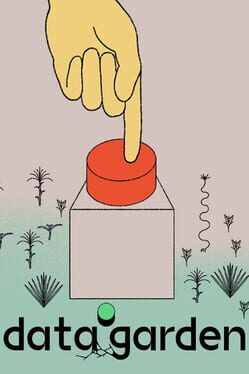
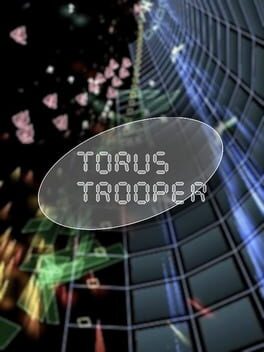

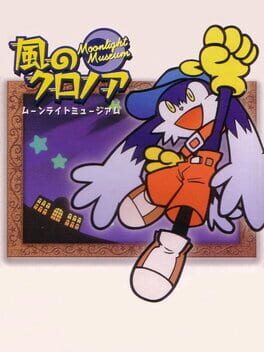
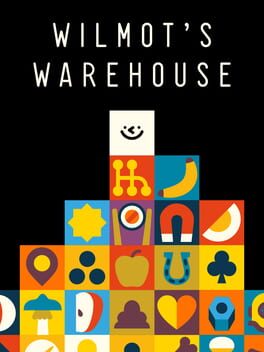


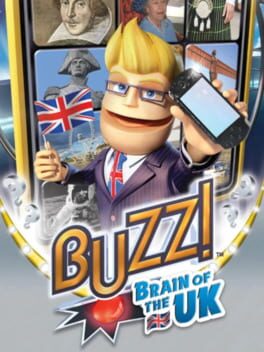
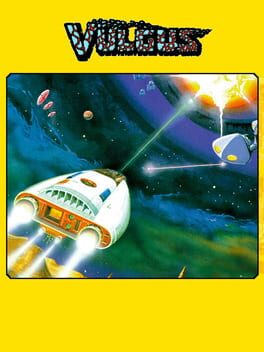
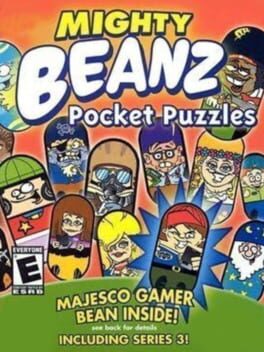
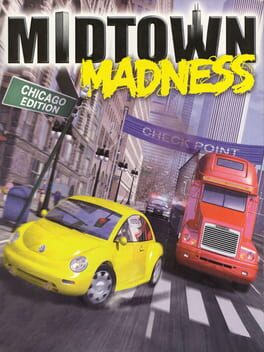
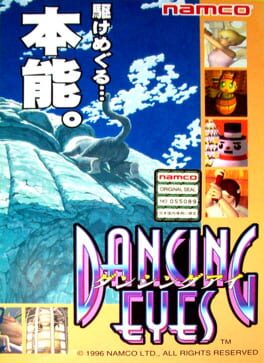
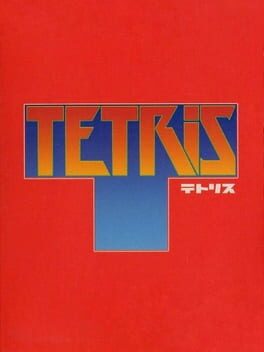
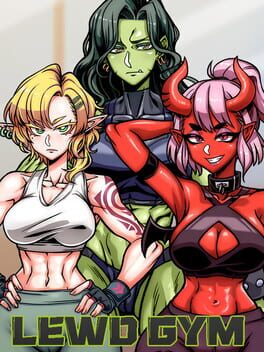
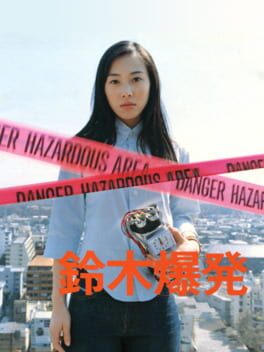
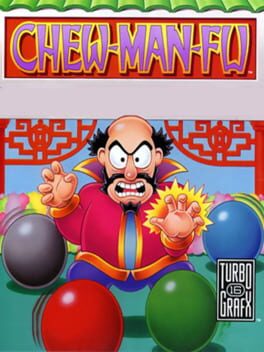
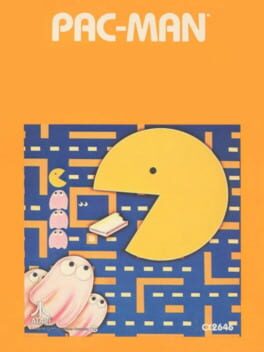

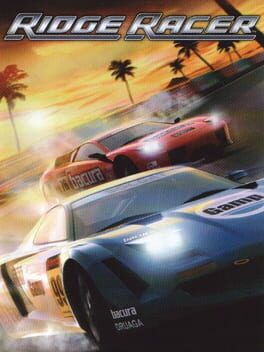

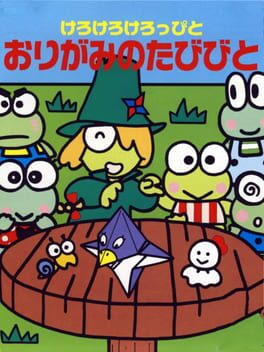
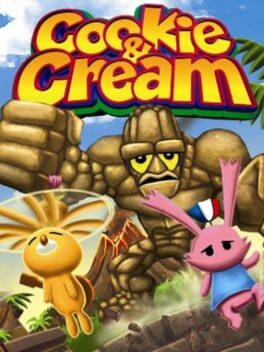
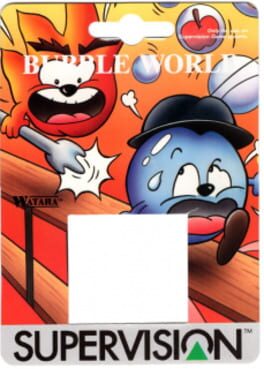
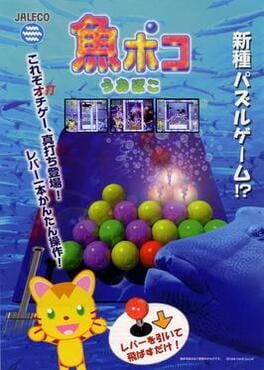
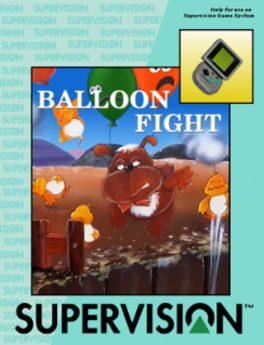
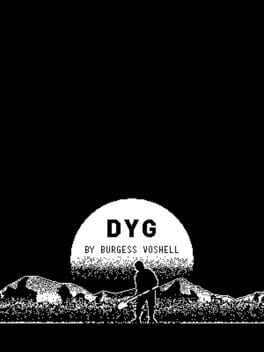

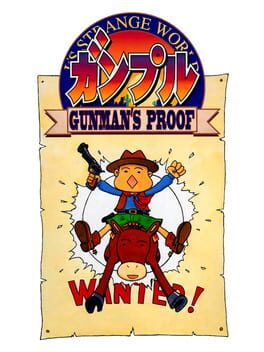
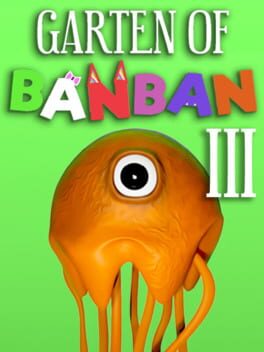
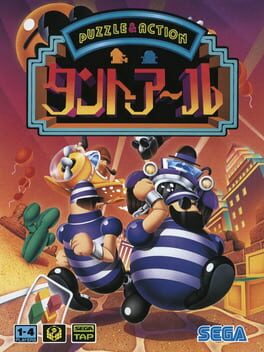
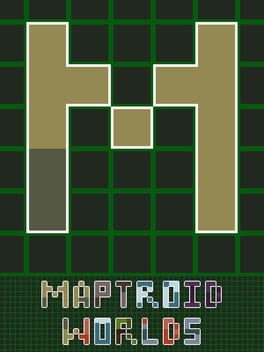
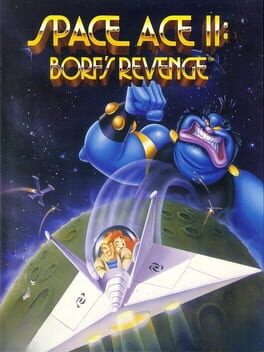
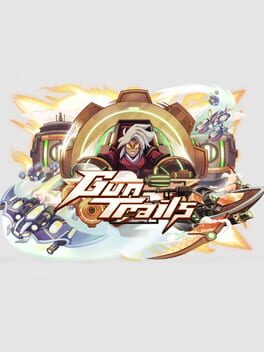
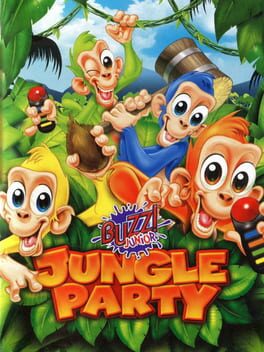
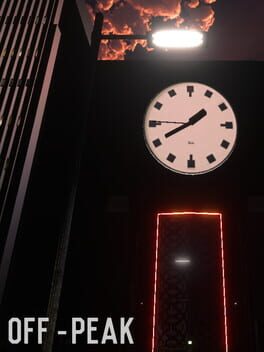
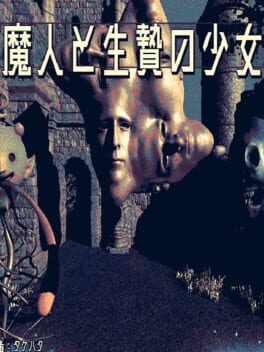
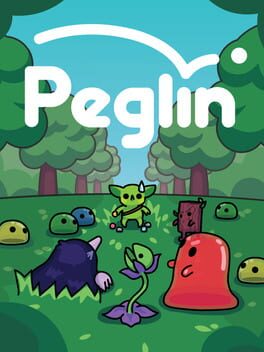
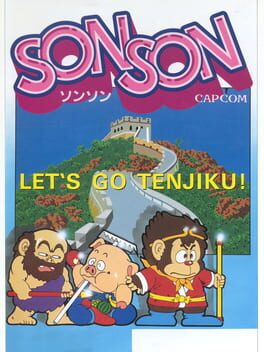
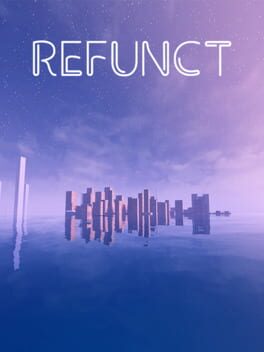
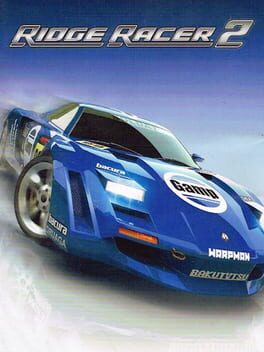
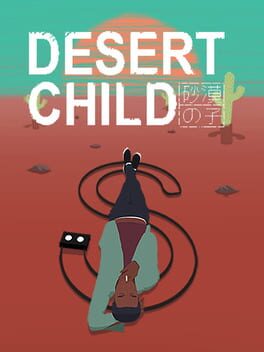

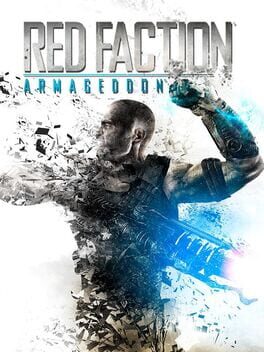
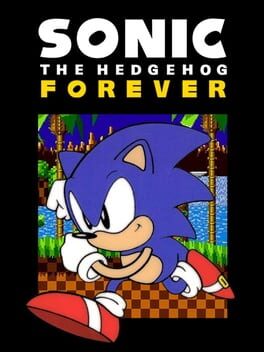
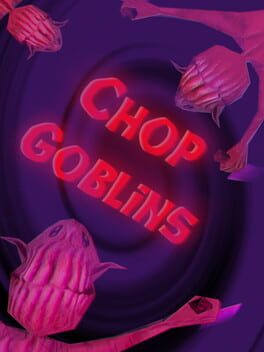

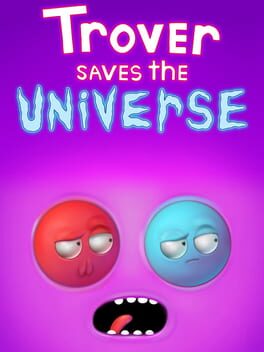
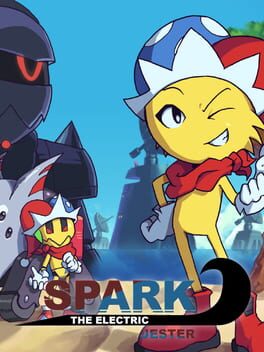

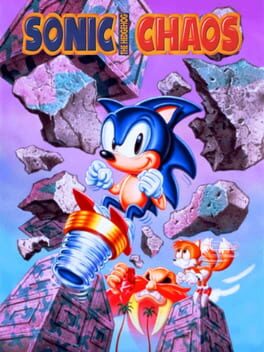
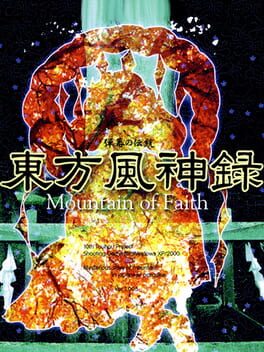


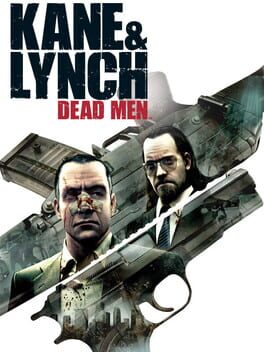
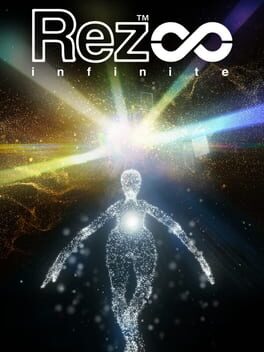

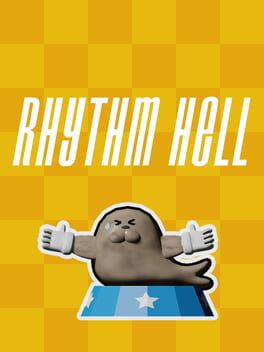

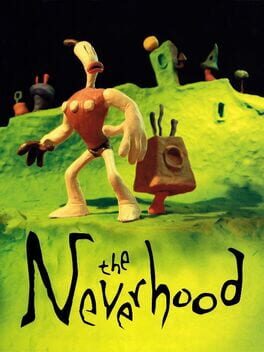
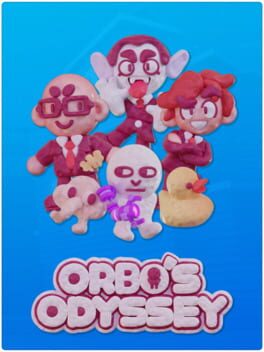
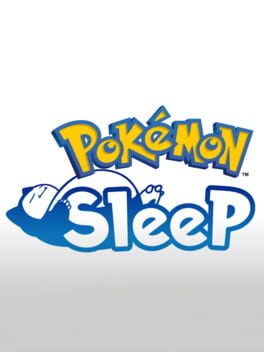

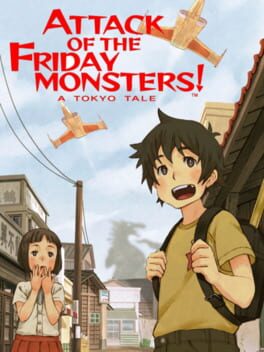

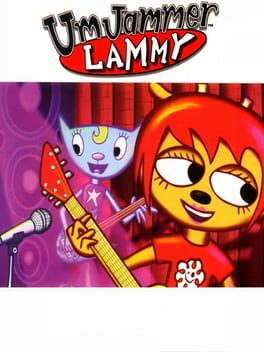
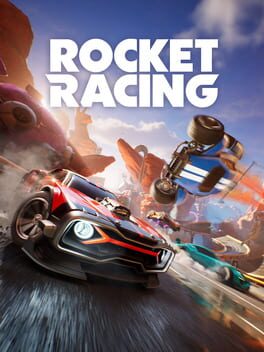

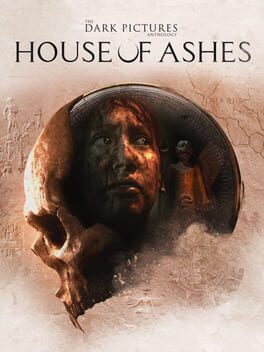
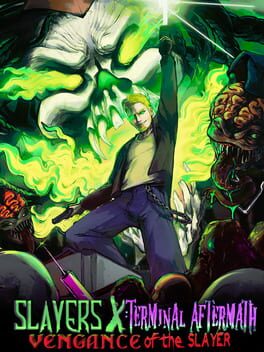

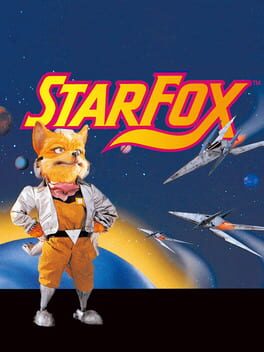
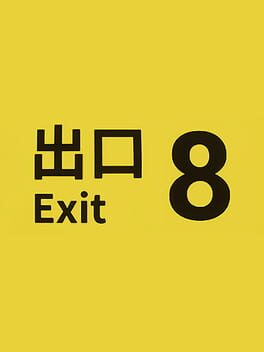
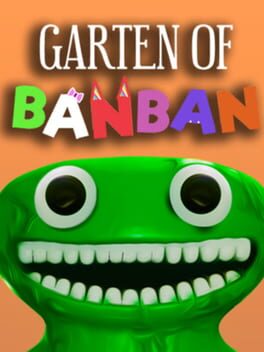
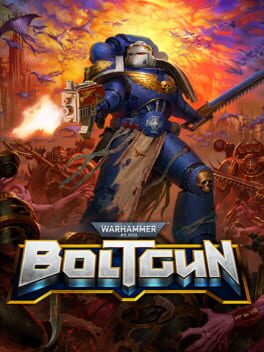

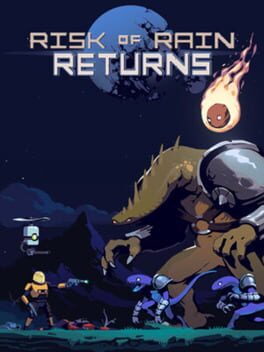
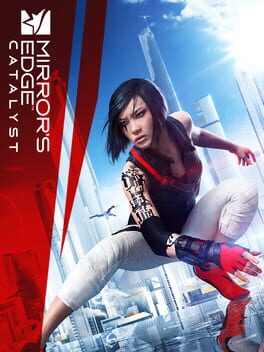
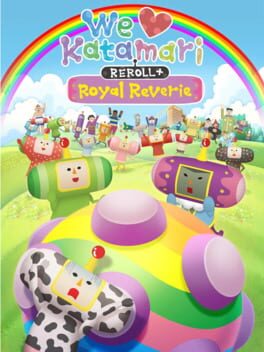
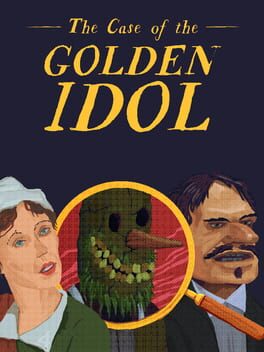


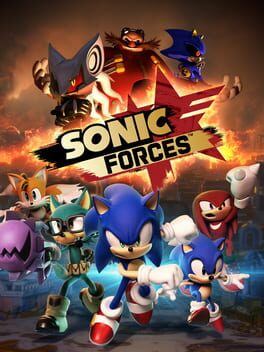
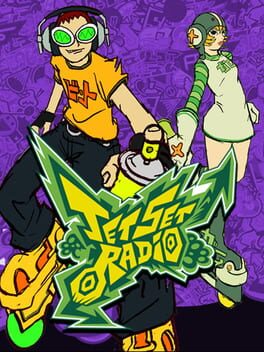

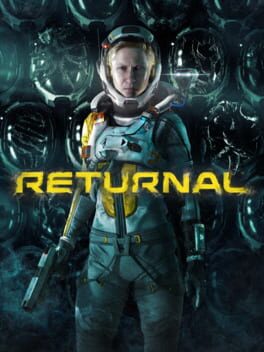

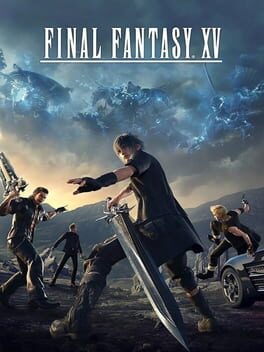
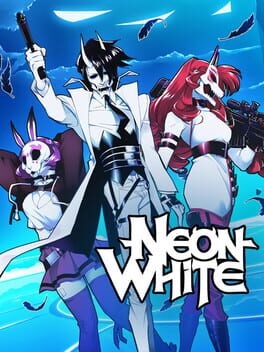
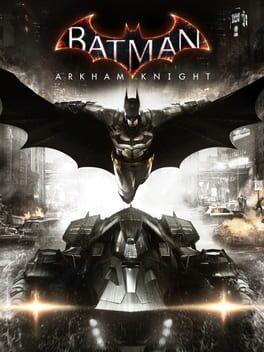




DeemonAndGames
6 months ago
For real tho I'm so glad you made this, I didn't even know you made a follow up to your 177 review so early in the year until I just saw it here, same things goes for a ton of reviews I hadn't checked out till now. Amazing year full of amazing reviews, that's something that I could say about a ton of the talented people on here (which is a lot) but your works are always a fantastic read and an inspiration for me and I'm sure also for many others. Excellent work!